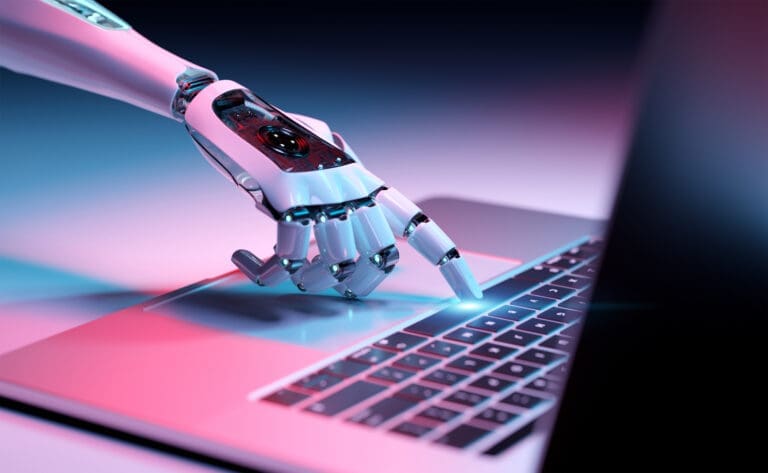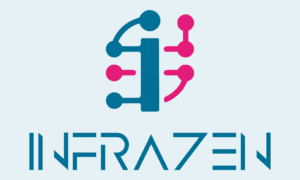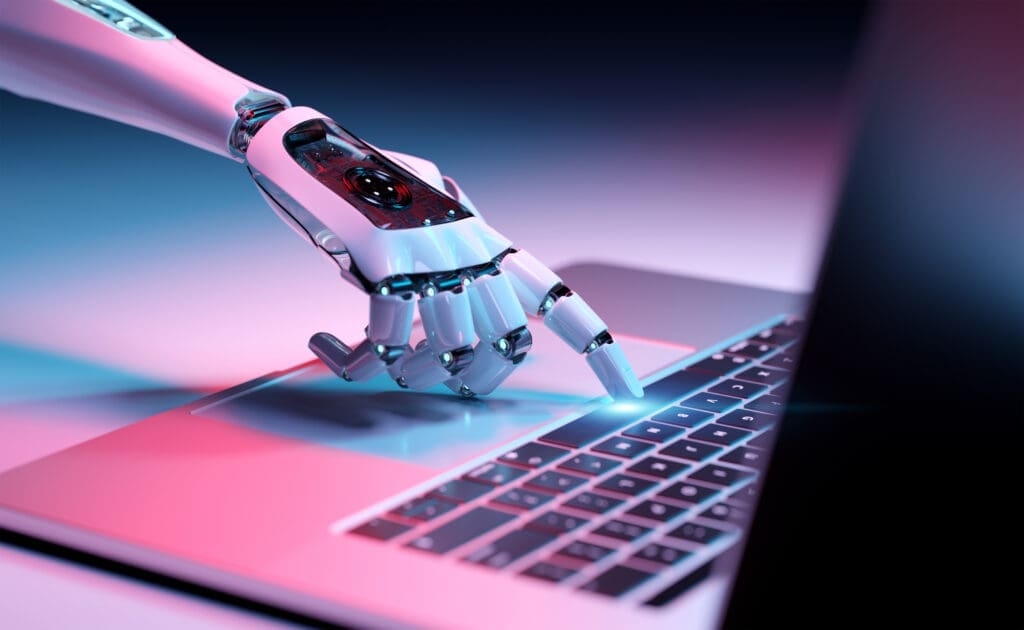
As a business owner or manager, you’re constantly looking for ways to optimise your operations and stay ahead of the competition. In recent years, two technologies that have emerged as game-changers are robotic process automation (RPA) and artificial intelligence (AI). In this article, we’ll explore how RPA and AI are transforming business processes across different industries, and how you can leverage their power to drive growth and efficiency in your organisation.
Introduction to Robotic Process Automation (RPA) and Artificial Intelligence (AI)
Before we dive into the specifics of RPA and AI, let’s take a step back and understand what they are and how they work.
What is Robotic Process Automation (RPA)?
RPA is a software technology that automates repetitive, rule-based tasks traditionally performed by humans. RPA bots, or software robots, can perform a wide range of tasks, from data entry and invoice processing to customer onboarding and claims processing. RPA enables businesses to reduce manual errors, speed up processes, and free up employees to focus on higher-value tasks.
What is Artificial Intelligence (AI)?
AI, on the other hand, refers to the simulation of human intelligence in machines. AI technologies can learn from data, recognise patterns, and make decisions based on that learning. Machine learning (ML), a subset of AI, is particularly powerful in that it allows machines to learn from data without being explicitly programmed. AI can be used in a variety of applications, from voice assistants and chatbots to predictive maintenance and fraud detection.
Understanding the Synergy between RPA and AI
While both RPA and AI are powerful technologies on their own, their true potential lies in their combination. By leveraging RPA’s ability to automate processes and AI’s ability to learn and make decisions, businesses can create intelligent automation solutions that are capable of performing complex tasks with little or no human intervention.
For example, an RPA bot can be trained to read and extract data from invoices, and an AI algorithm can be used to validate that data and make decisions on how to process it. This combination of RPA and AI can significantly reduce processing times and errors, while also improving accuracy and compliance.
Benefits of Incorporating RPA and AI in Business Processes
The benefits of incorporating RPA and AI in business processes are many, including:
1. Increased Efficiency and Productivity
By automating repetitive tasks and augmenting human decision-making with AI, businesses can significantly increase their productivity and efficiency. This allows employees to focus on higher-value tasks and can lead to cost savings and improved customer satisfaction.
2. Improved Accuracy and Compliance
RPA and AI can help businesses reduce errors and ensure compliance with regulations and policies. By automating processes, businesses can eliminate the risk of human error and ensure that all tasks are performed consistently and accurately.
3. Better Customer Experience
By automating customer-facing processes such as onboarding and support, businesses can provide a better customer experience. RPA and AI can help businesses respond to customer inquiries faster and more accurately, leading to increased customer satisfaction and loyalty.
Case Studies Showcasing the Success of RPA and AI Integration
While the benefits of RPA and AI integration are clear, it can be helpful to see real-world examples of their success. Here are a few case studies showcasing the impact of RPA and AI integration in different industries:
1. Healthcare
A large healthcare provider was struggling with manual processes for claims processing, resulting in long processing times and high error rates. By implementing an RPA solution with AI-powered decision-making capabilities, the provider was able to reduce processing times by 90% and cut error rates in half.
2. Finance
A global financial services firm was looking to improve its customer onboarding process, which was slow and tedious. By implementing an RPA solution that automated the data entry and validation process, the firm was able to reduce onboarding times by 80% and improve accuracy.
3. Manufacturing
A manufacturing company was struggling with equipment downtime and maintenance costs. By implementing an AI-powered predictive maintenance solution, the company was able to reduce downtime by 40% and cut maintenance costs by 25%.
How RPA and AI are Transforming Different Industries
RPA and AI are transforming a wide range of industries, from healthcare and finance to retail and manufacturing. Here are a few examples of how these technologies are being used in different industries:
1. Healthcare
In addition to claims processing, RPA and AI are being used in healthcare to support clinical decision-making, automate patient scheduling and reminders, and improve patient outcomes through predictive analytics.
2. Finance
In finance, RPA and AI are being used for everything from fraud detection and anti-money laundering to credit scoring and loan processing. These technologies are helping financial institutions reduce risk and improve efficiency.
3. Retail
In retail, RPA and AI are being used to improve inventory management, optimise pricing and promotions, and provide personalised customer experiences through chatbots and recommendation engines.
4. Manufacturing
In manufacturing, RPA and AI are being used for predictive maintenance, quality control, and supply chain optimisation. These technologies are helping manufacturers reduce downtime, improve product quality, and streamline operations.
Exploring the Different Applications of RPA and AI
The applications of RPA and AI are virtually limitless. Here are a few examples of how these technologies can be used in different areas of business:
1. Finance and Accounting
RPA can be used to automate tasks such as accounts payable and accounts receivable processing, financial statement preparation, and regulatory compliance reporting. AI can be used to improve fraud detection, risk management, and financial forecasting.
2. Human Resources
RPA can be used to automate tasks such as employee onboarding, benefits administration, and payroll processing. AI can be used to improve talent acquisition, performance management, and employee engagement.
3. Customer Service
RPA and AI can be used to automate customer service tasks such as order processing, returns and refunds, and support ticket resolution. AI-powered chatbots can provide 24/7 support and improve customer satisfaction.
Overcoming Challenges in Implementing RPA and AI
While the benefits of RPA and AI are clear, implementing these technologies can be challenging. Here are a few common challenges and how to overcome them:
1. Resistance to Change
Employees may be resistant to the adoption of RPA and AI, fearing that these technologies will replace their jobs. It’s important to communicate the benefits of these technologies and involve employees in the implementation process.
2. Lack of Expertise
Implementing RPA and AI requires specialised skills. If your organisation lacks in-house expertise, consider partnering with a vendor or consulting firm that can provide the necessary skills and experience.
3. Integration with Legacy Systems
Integrating RPA and AI with legacy systems can be complex. It’s important to have a clear understanding of your existing systems and processes, and to work with vendors or consultants who have experience in system integration.
Best Practices for Implementing RPA and AI in Business Processes
To ensure a successful implementation of RPA and AI in your business processes, here are a few best practices to follow:
1. Start Small
Start with a few simple processes to automate and gradually scale up. This will help you identify any issues early on and refine your approach.
2. Involve Stakeholders
Involve stakeholders from across the organisation in the implementation process. This will help ensure buy-in and support for the project.
3. Measure Success
Set clear metrics for success and regularly measure progress against those metrics. This will help you identify areas for improvement and refine your approach over time.
The Future of RPA and AI in Business
As RPA and AI continue to evolve, we can expect to see even more exciting applications and use cases emerge. For example, RPA and AI can be used to support remote work and digital transformation efforts, and to improve collaboration and decision-making across teams and departments.
Conclusion: Embracing the Power of RPA and AI for Business Growth
In conclusion, RPA and AI are powerful technologies that can help businesses drive growth, improve efficiency, and provide better customer experiences. By understanding the synergy between these technologies, exploring their different applications, and following best practices for implementation, businesses can leverage the power of RPA and AI to stay ahead of the competition and succeed in the digital age. To find out more about how we can help you to use RPA and AI to transform your business, do contact us at InfraZen.

